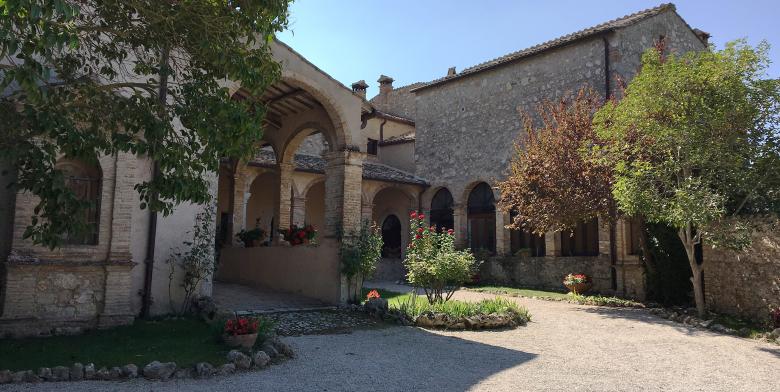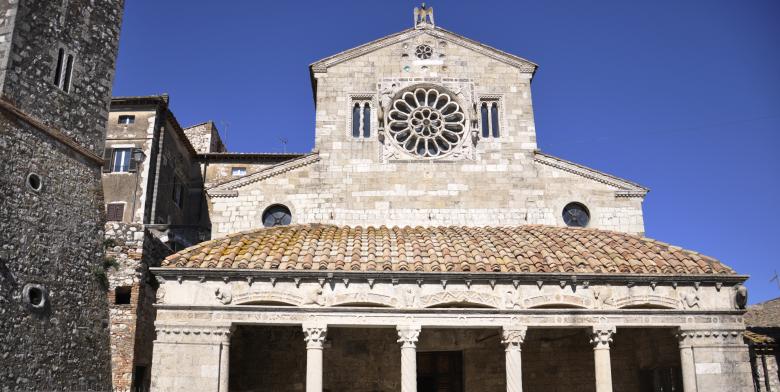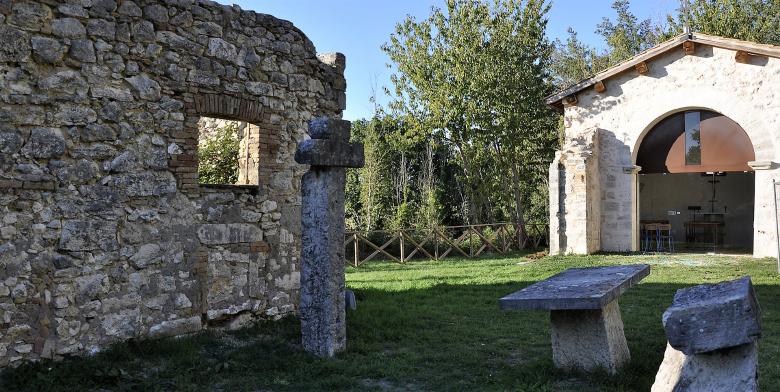But the Alviano family, just like lions, returned the possession of the property thanks to another fighter of their genie, Francesco, who turned it into his residence. But he had no long life: the Chiaravalle, a powerful Ghibelline family from Todi, ordained its destruction.
The massive manor that you see today is due to the son of Francesco d’Alviano, Bartolomeo, “our” soldier of fortune, a skilled military architect.
The huge square – plan castle with corner towers was built by him in 1495 like a sumptuous and an elegant baronial residence, equipped with defense corps in strategic points, according to the rules of the military architecture created by Leon Battista Alberti.
You’ll be pleasantly surprised by the nice Renaissance courtyard of this fortress, with double loggia and on which looks out some prestigious environments with several halls decorated by Giovanni Antonio de’Sacchis called the Pordenone (from the town where the painter was born probably in 1483 – 84).
Do not miss to visit the chapel of Saint Francis with several frescoes of the Seventeenth century, among which the Miracle of Saint Francis and the swallows, happened in 1212 right at Alviano. According to Fioretti, in fact, the Saint from Assisi silenced the chant of the swallows, which was disturbing the sermon.
Between the painted figures, also comes up a woman’s face, the commissioner of those frescoes. She is Olimpia Pamphili Maidalchini, sister – in – law of pope Innocenzo X, who bought the castle at auction in 1654. What happened was that - after a secular transition in which in 1500 the son of Bartolomeo, Bernardino, an expert foundryman, turned the fortress into a cannon foundry among the most important of Umbria – the Alviano family was extinguished for lack of male heir losing their manor.
Later, by descent, this fortress was inherited in 1816 by the prince don Andrea II Doria Pamphilj Landi. Today it is owned by the Municipality.
These are pages and pages of history oozing from the manor walls, still today a heart button of the community. You’ll know it exploring its halls.
The main floor of the building hosts the town hall, where, in the council chamber, it stands the picture with Bartolomeo’s face, a contemporary work which reproduces the real features of our soldier of fortune, taken from a coin of the Sixteenth century coined by the Republic of Venice of which the leader was employed.
On the basement floor you can visit two expositions: the first one is the Museum of the Rural Life, the land and the tool, which explains how to produce wine and olive oil through more than one thousand items that belonged to local families between the late XIX century and the post war period. It also explains how to work the canvas and the wheat, the fishing, the animal care, the cattle breeding and pig farm; the second one is the Documentation Center Bartolomeo d’Alviano and Umbrian Soldier of Fortune where, thanks to the multimedia tools, you can retrace the errands of the great leader among which three important battles between the late Fifteenth century and the beginning of the Sixteenth century: Marignano, Agnadello and Garigliano.
Also important, the typical equipment of the Soldier of fortune, with the reconstruction of weapons and armors at that time.
INFORMATION
Address
Bartolomeo d'Alviano square, 10
05020 Alviano (TR)
Hours of operation
April through October
Saturday 4-7 p.m.
Sunday 10 a.m.-1 p.m. and 2 p.m.-7 p.m.
November through March
Saturdays 3:30-6:30 p.m.
Sundays 10 a.m.-1 p.m. and 2-6 p.m.
Contact
0744-905010; 324 818 19 38;



































